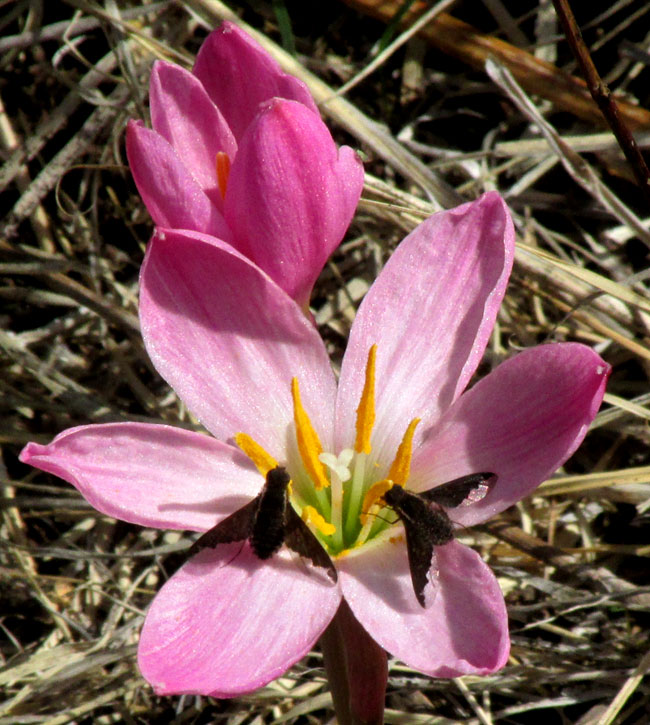Excerpts from Jim Conrad's
Naturalist Newsletter
entry dated June 14, 2022, issued from near Tequisquiapan, elevation about 1,900m (6200 ft), ~N20.57°, ~ W99.89°, Querétaro state, MÉXICO
PINK LINDLEY'S RAIN-LILIES
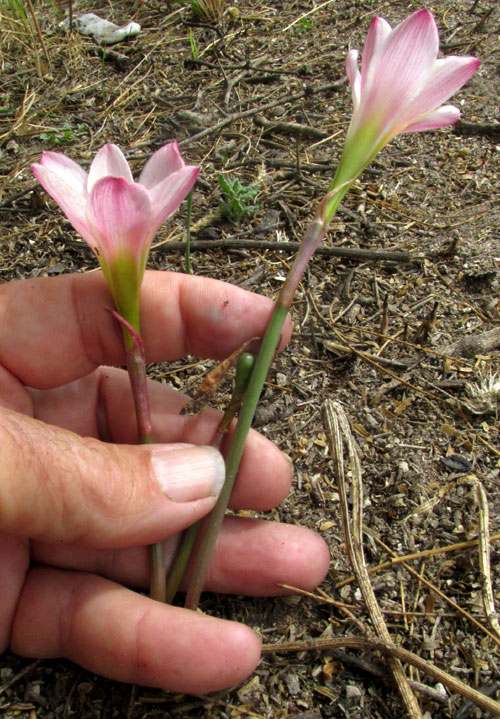
After an exceptionally long dry season with no rain since last December, finally we received 22mm (7/8 inch), and three days later the first rain-lilies were up, and by the fifth day already they were fading. The ones above were a colony of eight at the weedy, partly shaded edge of a cornfield.
About 70 species of rain-lilies, genus Zephyranthes, are recognized, all native just to the Americas, and they can be tricky to distinguish. One reason is that their taxonomy isn't well understood. At this time it's even unclear whether rain-lilies belong to the Amaryllis or Lily Family. The Flora of North America assigns them to the Lily Family but most other sources regard them as amaryllids.
One important field mark for determining our species is that its flower faces exactly skyward, not at all bent to one side as are some other species. Also, in the above picture, on the flower at the right, notice that the green stem or scape, which at a certain point turns purplish brown. The purplish brown area consists of the sheath, a thin, paper tube covering the blossom's stem-like pedicel, which on this flower is about 13mm long. Pedicel length can be important when identifying rain-lily species. The top of the sheath extends as a tapering spathe around the base of the corolla tube. Other important features are seen inside the blossom:
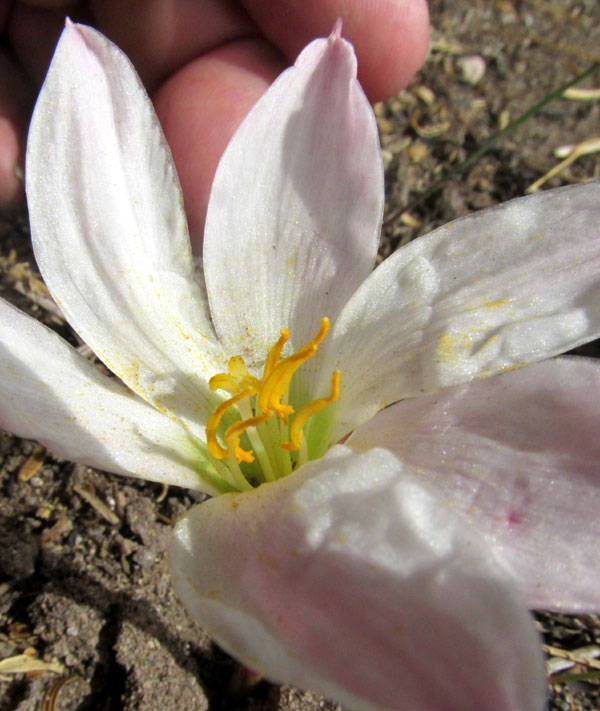
The whitish stigma dusted with yellow pollen in the center is three-lobed, and is shorter than or equaling the height of the stamens, not surpassing them, as in some species. The corolla's throat is slightly greenish-yellow, but not darkly marked or white. Also, the fairly broad width of the pink tepals is important.
Some plants in the community were just emerging from the ground, with very short stems:
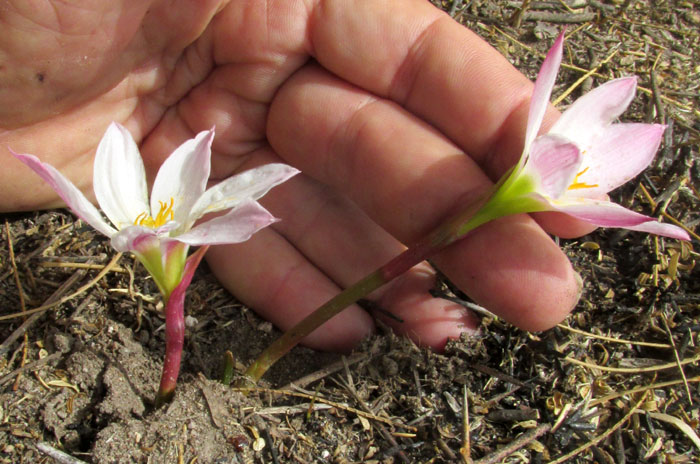
Others, just five days after the rain, already had shriveled corollas atop ovaries enlarged almost to fruit size:
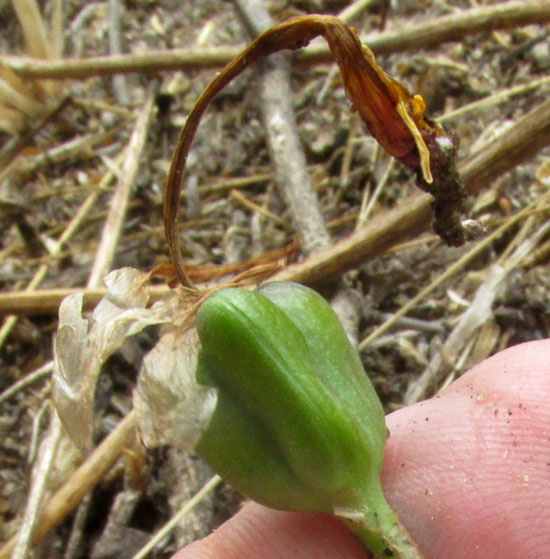
All these details lead us to what's sometimes called the Pink Lindley's Rain-lily, ZEPHYRANTHES LINDLEYANA. It occurs sporadically throughout Mexico through Central America to Costa Rica, seldom in much abundance. It bears an English name because its bulbs are sold commercially to gardeners. It's known to escape from gardens into dry, rocky parts of the natural landscape, which indicates the kind of flexible adaptability needed to prosper at the edge of a cornfield.
Otherwise not much is known about it. Here's another picture, just because it's such a pleasure to look at:
